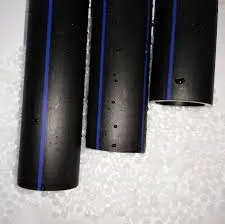Oct . 08, 2024 20:21 Back to list
Essential Components of Drain Pipe Fittings for Efficient Plumbing Systems
Understanding Drain Pipe Fittings Essential Components for Effective Drainage Systems
Drain pipe fittings are essential components in plumbing systems, facilitating the efficient management of water waste and ensuring a smooth drainage process in residential and commercial buildings. These fittings play a crucial role in directing wastewater from various appliances, sinks, and lavatories toward the main sewer line or septic system. Understanding the different types of drain pipe fittings, their applications, and installation methods is vital for anyone looking to create or maintain an effective drainage system.
Types of Drain Pipe Fittings
1. Elbows Drain pipe elbows are used to change the direction of the pipe. They are available in various angles, commonly 45° and 90°. These fittings are essential in navigating plumbing around corners and obstacles within a structure.
2. Tees A tee fitting allows for a branching of the drain line, connecting two pipes at a 90° angle. This is particularly useful when directing drainage from multiple sources into a single outlet, helping to consolidate waste lines effectively.
3. Wyes Similar to tees, wye fittings connect three sections of pipe but at a more gradual angle, usually 45°. This smoother transition helps reduce the risk of clogs and enhances water flow efficiency, making them preferable in certain applications.
4. Couplings Couplings are used to connect two sections of pipe, whether they are of the same or different diameters. This fitting can also serve as a repair option when a section of the pipe is damaged.
5. Reducers These fittings are designed to connect pipes of different diameters. They reduce the size of the pipe to maintain a consistent flow rate and prevent blockages caused by abrupt changes in pipe size.
drain pipe fittings

6. Cleanouts A cleanout fitting provides access to the drainage system for maintenance and cleaning. They are typically installed at strategic locations in the drain line to facilitate the removal of clogs and buildup without the need for extensive dismantling of the plumbing system.
Materials Used in Drain Pipe Fittings
Drain pipe fittings are manufactured from a variety of materials, including PVC (Polyvinyl Chloride), ABS (Acrylonitrile Butadiene Styrene), and metal options like copper and cast iron. PVC and ABS are popular for residential drainage due to their lightweight nature, resistance to corrosion, and ease of installation. Metal fittings, while more durable, may require additional maintenance to prevent rusting and corrosion over time.
Installation Considerations
When installing drain pipe fittings, it’s crucial to ensure that all connections are secure and leak-proof to prevent water damage and contamination. Proper alignment and the use of appropriate sealants or adhesives are key to achieving a successful installation. Additionally, local building codes should be taken into account to ensure compliance with regulations governing drainage systems.
Conclusion
In summary, drain pipe fittings are fundamental to any plumbing system, guiding waste away effectively and maintaining the integrity of drainage. By selecting the right fittings and ensuring proper installation, one can achieve a reliable drainage solution that minimizes the risk of clogs and blockages. Understanding these components empowers homeowners and professionals alike, enabling the creation of efficient and functional plumbing systems essential for everyday life.
-
Durable PP Rigid Sheet: Lightweight, Chemical Resistant Solutions
NewsAug.21,2025
-
PVC Grey Sheet for Extraction: Chemical Resistant & Durable
NewsAug.19,2025
-
Durable PVC Pipe Fittings for Plumbing & Irrigation Needs
NewsAug.18,2025
-
HDPE Steel Belt Reinforced Spiral Corrugated Pipe | High Strength
NewsAug.17,2025
-
HDPE Pipe Fittings: Durable, Leak-Proof Solutions
NewsAug.16,2025
-
Premium CPVC Sheet: High-Temp & Chemical Resistant Solutions
NewsAug.15,2025

